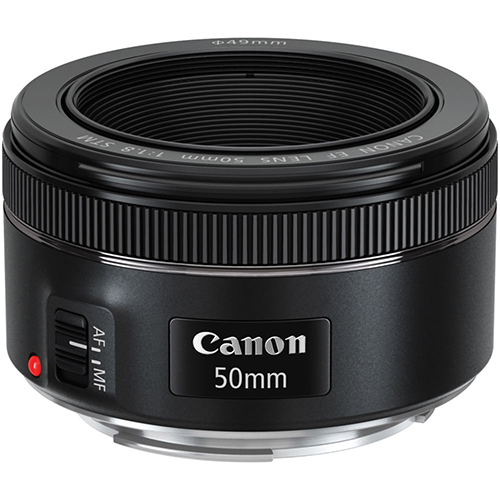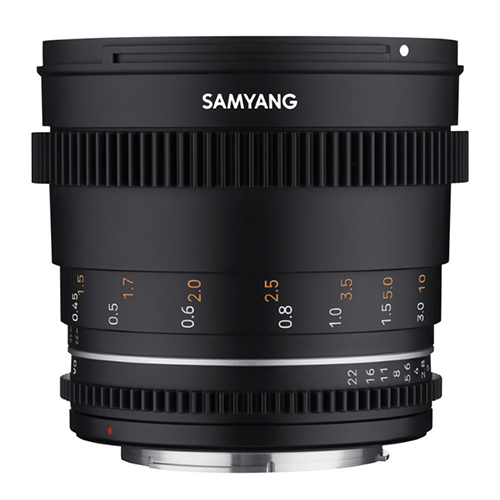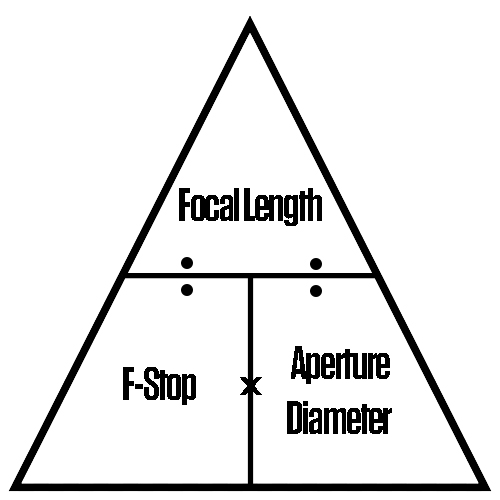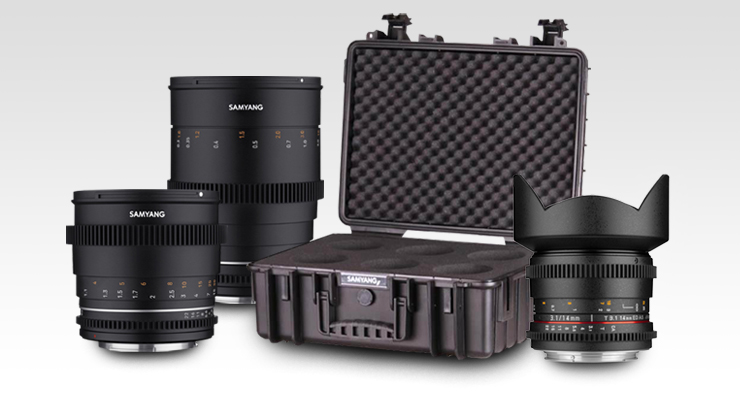Understanding Cinelenses: What is a T-Stop?
Understanding Cinelenses: What is a T-Stop?
A T-Stop number is found almost exclusively on Cinlenses which in general are expensive and therefore mainly used by large budget video production companies. It is no surprise then that most of those growing up in the DSLR era (myself included), where F-Stop is king and affordable high-quality videography lenses are freely available, will very likely never have heard of a T-Stop number on a lens.
The introduction of Samyang’s new VDSLR MK2 kits, however, where you can buy 5 Cinelenses for less than one Fujinon MK50-135mm T2.9 Lens got me thinking that maybe it’s time to take the dive and find out what this elusive T-Stop is and why it is so important.
Fair warning - there is a small amount of maths coming your way if you read on.
T-Stop vs. F-Stop
The first thing to notice is that the T-Stop number appears in the same place that an F-Stop number usually does, for example:

Canon EF 50mm f1.8 STM
 Samyang VDSLR 50mm T1.5 MK2
Samyang VDSLR 50mm T1.5 MK2
This is because they are both to do with the amount of light entering a lens, however with one very crucial difference.
Before I get into that difference it is important to know what an F-Stop is. Photography 101 is essentially how to use aperture, and yet some of the most advanced photographers do not know what an F-Stop number truly is. Whilst it is not necessary for the casual photographer to know, it is useful for explaining why we have F-Stops and T-Stops. To find the F-number of a lens requires this simple calculation:
F-Stop = Lens Focal Length / Diameter of the Aperture Opening
Or to give you the full equation; focal length, aperture diameter and F-stop can all be calculated in this mathematical triangle:

In general, the number given by this calculation will indicate how much light will pass through the lens, with a lower number such as f1.8 allowing a lot of light in because the aperture diameter is open wider, and at f22 the aperture blades are closer together and letting less light into the camera.
One crucial element that an F-number does not take into account is that as the light travels through the glass elements of the lens a percentage will be lost due to reflection, refraction and absorption. Have you ever noticed that when you set your DSLR/mirrorless camera to a light meter the exposure is slightly off, but then you adjust your F-Stop from say F4 to F4.5 it looks perfect? That is due to the light transmission. This means that if you are shooting on an F1.8 lens that is absorbing F0.4 of light, you are actually shooting on an F2.2 Lens. This is where the T-Stop comes into play.
What is a T-Stop?
The T in T-Stop stands for “transmission”, or how much light is actually passing through the lens and reaching the camera sensor. In the example from above, the F1.8 lens is technically a T2.2 lens because this is the amount of light that the camera sensor is truly receiving.
Because not all lenses are made equal the T-Stop on two lenses with the same focal length and F-number will vary, whilst the F-Stop will always remain the same across all lenses with identical focal lengths and aperture diameters. The T-Stop value is initially calculated the same as the F-Stop, however, it is further adjusted to account for the amount of light that is lost during transmission.
To find the T-Stop requires this calculation:
T-Stop = F-Stop / Lens System Transmittance %
It is surprisingly difficult to find out a lens’ transmittance percentage from a spec sheet however that is not too crucial. What is important to know is that the T-Stop number is far more accurate in communicating how much light a lens will truly transmit to the sensor, and this information can be used to create better lighting in your videography.
Why is a T-Stop important?
T-Stop numbers become crucial when working in the video industry. On a large film set, there are going to be multiple people, cameras, lights and lenses all working over numerous days towards creating one film that needs to have a uniform look. Whilst lighting differences can be changed in post, it is often far cheaper and faster to use high-end Cineglass lenses that have their T-Stop already calculated.
Lighting is set to a light meter and by using lenses with the same T-Stop, for example T1.5, every lens will record footage at the same exposure level. Even if you are a one-person team if you don’t want to be re-calculating your light meter readings every time you change to a different lens this is the solution.
Is it worth investing in lenses with a T-Stop for Videography?
Of course, these expertly-crafted lenses tend to be highly expensive and when films have been produced at such a high standard on DSLR lenses you wouldn’t be the first person to wonder if they are really worth it, especially if you are not producing the next Oscar winner. That’s where Samyang comes in with their VDSLR kits. These lenses are the best of both worlds – highly fine-tuned and cinema ready, yet at a much more affordable price.
The recently released MK2 sets are available to buy in Canon EF and Sony E mount, in kits of three and five lenses. For example, you could have your hands on a 14mm T3.1, 35mm T1.5 and an 85mm T1.5 for £500 cheaper than the Canon EF 16-35mm f2.8L III USM Lens. It feels like a no-brainer if you are a small media company or YouTuber to get your hands on a set of exceptional lenses that are going to give you more consistent results!
To view all the available Samyang VSDLR MK2 Lens Kits click here >
Thank you!
Thanks for taking the time to read our blog, we really do hope they help you out and answer some of your questions. If you still have some unanswered, then please feel free to get in touch with our team of experts.
We have a LiveChat option on our website and we can, of course, be contacted via our email, we're also on the end of the phone too! Read more on how to contact us here >
Want to write for us?
If you've got experience with producing content on photo, video and/or optics products or techniques then we would love to hear from you. Contact our blog editor, Fee, with a sample of your work at [email protected].
- By Beatrice Debney
- 30 Jun 2021




































































